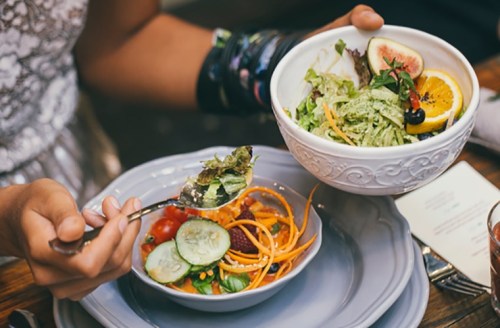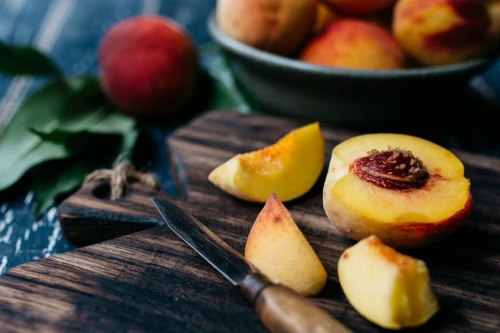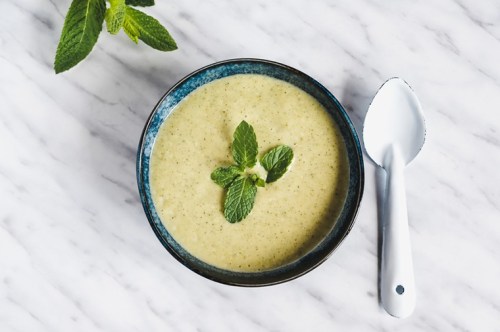Our editors independently select these products. Making a purchase through our links may earn Well+Good a commission

At age 44, cardiologist John Day, MD, was overworked, hypertensive, in constant pain, and full of excuses. He took five medications daily while he dreamed of retirement. So when he heard of a region in remote China where people regularly lived to be over 100—with no signs of Alzheimer’s, Parkinson’s, or cancer—he became seriously obsessed. What was their secret?
Within a matter of months, he and his family had packed up their lives and settled in with the Bapan villagers to see first-hand how they lived such long, healthy lives.
In The Longevity Plan, written with his wife, Jane, Dr. Day shares seven key habits he observed the villagers living out every day during the year he spent with them. The good news is it’s 100 percent possible to adopt them even if you don’t live in Bapan. Grab your bullet journal: The first three things to add to your checklist for a superhuman lifespan are to know your life’s purpose, surround yourself with positive people, and move your body as much as you can. (You might need to file that first one under “long term goals.”)
“Processed foods and added sugar have never shown to have a health benefit. Cutting them out is 90 percent of a a healthy diet right there.”
And then of course there’s your diet. The biggest lesson Dr. Day learned about eating for longevity is simple: “Processed foods and added sugar have never shown to have a health benefit. Cutting them out is 90 percent of a a healthy diet right there,” he says. No magic pills or expensive ingredients required.
Here’s how you can eat for a longer, healthier life (according to some of the oldest people in the world).

Fill your plate with plants
Similar to the findings of The China Study (one of the largest comprehensive studies of human nutrition ever conducted), Dr. Day saw that veggies made up the bulk of the villagers’ diets. “They picked their own produce and ate it the same day. And since they were essentially cut off from the rest of the world, they didn’t have any access to sugar or processed foods,” he says. “If you wanted any, it was an eight day round trip by foot.” Imagine that trek just for a pint of Ben & Jerry’s.
While it might not be that surprising that the world’s oldest people aren’t consuming cupcakes and TV dinners on the reg, what is interesting is that even meat plays a secondary role in their meals. “They didn’t have livestock or even chickens for eggs because armies would invade the village and steal them in times of extreme poverty,” Dr. Day explains. “But they do eat fish about twice a week.” And you’ll notice something else missing from their diet: dairy. It’s another food group that just isn’t on their radar.

Pass the sweet potatoes
There’s one vegetable Dr. Day noticed showing up on his plate more than others: sweet potatoes. “They ate them for breakfast, lunch, and dinner,” he says.
In the morning, the villagers ate a cornmeal porridge—made from corn picked locally, of course—with cooked chunks of the tuber. For lunch and dinner, it was used in stir-fries and soups. While they didn’t eat the fiber-rich root at every single meal, Dr. Day says sweet potatoes were served up several times a week.

Eat fruit for dessert
Before Dr. Day and his family moved to Bapan, he had a big sweet tooth—and some not-so healthy snacking habits. But once he started eating what the villagers ate, his cravings completely went away. (He also lost 30 pounds.) “If you change your environment so that you’re not tempted, that longing for sugary treats goes away,” he says. “It’s not even about having strong willpower because you won’t even be craving it.”
The villagers only had access to natural sugar—AKA fruit—so that’s what they craved. Fresh lychees, mangoes, and papayas are a sweet way to end a meal (or an afternoon snack), with the added bonus of being packed with vitamins and minerals.

Curl up with “longevity soup”
According to Dr. Day, several times a week villagers in Bapan ate a milky gray soup that has earned the moniker “longevity soup.” The broth is made with hemp seeds, which are full of healthy fats, protein, and fiber. And there are only two other ingredients in this staple dish: pumpkin greens (the leaves and stalks) and salt.
“In the States, we often only use pumpkin to make pies or bread—we completely disregard the stalks, which the villagers make use of and eat,” he says. While the pumpkin stalks and leaves aren’t as easy to come by here in the States—unless you grow your own—adding another green, such as spinach, won’t hurt the nutritional value of the dish one bit. See the full recipe for longevity soup below:
Longevity Soup
Ingredients
1 cup dried hemp seeds1 cup pumpkin greens (or an alternative green of you don’t have access to pumpkin leaves and stalk)1/4 tsp salt
1. To prepare the greens, first rinse and dry them. Remove all the stalks larger than the diameter of a pencil. Clip off the leaves and peel any thick fibers from the smaller stalks.
2. To prepare the broth, start with a cup of hemp seeds and put them in a blender, adding a small amount of water as the seeds break down until the mixture is a paste. Transfer it to a fine strainer.
3. Boil four cups of water and run it over the strainer into another pot. It is fine if some of the paste begins coming through the strainer as well. Once all of the water has been passed through the strainer, pass it through the strainer again into the other pot.
4. Bring the broth to a boil, add the pumpkin leaves and thin stalks, and let the entire soup boil for about one minute. Remove from heat and salt lightly to taste.
If you need help cutting out sugar, this guide will help you. Or if dairy’s more your issue, here are tips for that, too.
Sign Up for Our Daily Newsletter
Get all the latest in wellness, trends, food, fitness, beauty, and more delivered right to your inbox.
Got it, you've been added to our email list.









